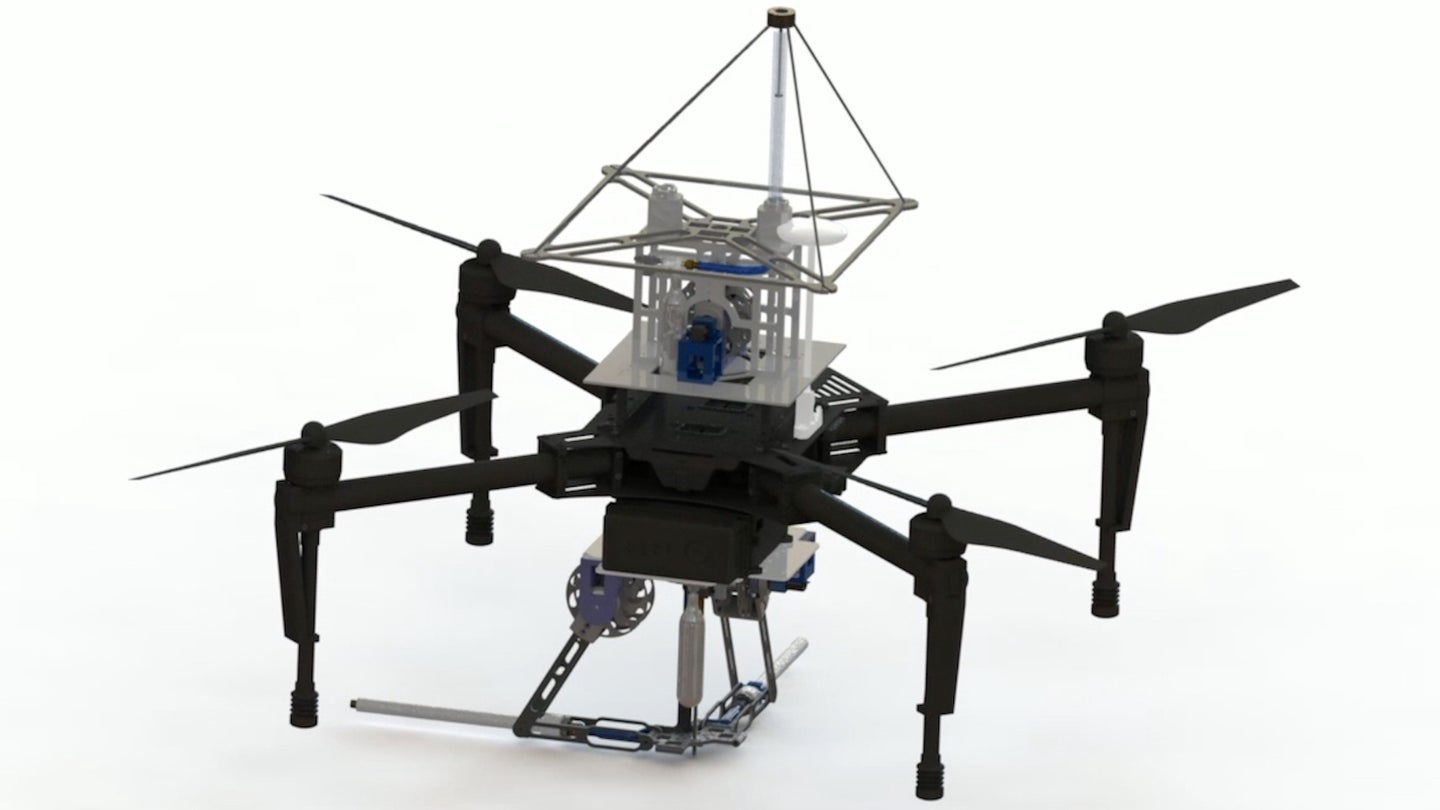The Bio-Inspired SpiderMAV Drone Weaves Webs for Stability
We’ve seen quite a few biomimetic drones in the past. This drone, the SpiderMAV, can shoot polystyrene threads to stabilize itself against structures.

We’ve written about bio-inspired drones before. Remember the S-MAD drone, an unmanned aerial vehicle capable of mimicking a bird’s perch on vertical surfaces? Or the more directly-named Bionic Bird drone? These biomimetic drones take their inspiration from our ecology around us, supplementing avian behavior into their proverbial utility belts. While the main attraction of the Bionic Bird was its stealthy ability to blend in with actual birds, and the S-MAD could perch against walls like one, this new drone developed by the Aerial Robotics Lab at London’s Imperial College took its inspiration from spiders. The SpiderMAV can shoot actual silk strings at walls in order to stabilize itself to perch against structures wherever necessary or convenient.
Let’s let footage of this spider-inspired UAV explain itself more clearly, shall we?

According to Spectrum, Darwin’s bark spider, which the SpiderMAV is based on, can spin 25-meter long silk webs that are twice as durable as any other spider’s silk, making it the strongest biological material known to man. The drone itself is basically a DJI Matrice 100 with a specifically-designed module atop and a stabilizing one on the underside.
The perching gear is comprised of an anchor launcher that uses magnets, and a spooling system utilizing polystyrene thread, according to Spectrum. In short, when the drone finds a magnetic surface, the user can shoot an anchor transporting the polystyrene thread to its target, a magnet-friendly ceiling or pole, and will then perch beneath it. The shot is accomplished thanks to the module’s compressed gas-based launcher, allowing the drone to power off and dangle once successfully tethered to a surface. How does it remain securely attached and stable? Let’s check it out.

According to Spectrum, “While attitude-hold mode control of the DJI M100 gave maximum deviation of 136, 386, and 106 mm in X,Y and Z direction respectively, test results showed that the stabilizing module improved stability of the MAV in all 3-dimensions with maximum deviation of 47, 80, and 75 mm in X, Y and Z respectively.” In other words, the energy-savings of this perching ability are vast, allowing the drone to massively reduce its power consumption to virtually zero once successfully perched.
To be clear, this drone is still very much in its early stages of development, with all of the aforementioned capabilities functioning well yet in preliminary testing phases. It’s still unclear how the anchored threads disengage, or how the magnet’s strength is modified while in use, and if any additional claw or grabbing utensils could or would be added. Reportedly, the SpiderMAV “opens up a new trend in the field of robotics on investigating string-driven systems with active moving platform.”
